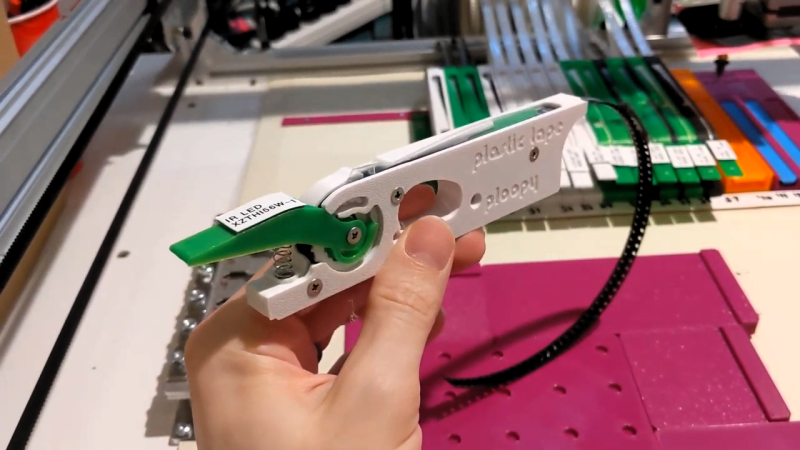A fair number of hackers reach that awkward age in their careers – too old for manual pick and place, but too young for a full-fledged PnP machine. The obvious solution is to build your own PnP, which can be as simple as putting a suction cup on the Z-axis of an old 3D-printer. Feeding parts into the pick and place, though, can be a thorny problem.
Or not, if you think your way through it like [Phil Lam] did and build these semi-automated SMD tape feeders. Built for 8-mm plastic or paper tapes, the feeders are 3D-printed assemblies that fit into a rack that’s just inside the work envelope of a pick and place machine. Each feeder has a slot in the top for the tape, which is advanced by using the Z-axis of the PnP to depress a lever on the front of the case. A long tongue in the tape slot gradually peels back the tape’s cover to expose a part, which is then picked up by the PnP suction cup. Any machine should work; [Phil] uses his with a LitePlacer. We like the idea that parts stay protected until they’re needed; the satisfyingly clicky lever action is pretty cool too. See it briefly in action in the video below.
It looks like [Phil] built this in support of his popular Ploopy trackball, which is available both as a kit and fully assembled. We think the feeder design is great whether you’re using PnP or not, although here’s a simpler cassette design for purely manual SMD work.
















Jaw dropped open….
Uh. yeah. Wow.
clever, because forwarding some tape is not very easy.. That’s what my Chinese PNP machine struggles with at least. I’d like to see some more footage of his PNP machine.
Wow, perfect!
:o)
It’s kinda hard to see but I think that the cover-tape-peeling is rather novel, it appears that it does not fully peel the cover tape, only along the non-driven edge gradually pushing it further and further off until it’s just held on by the edge of the carrier with the sprocket holes, enough to uncover the parts for picking but leaving it actually attached to the carrier so it can be sprocket-ed around and discarded with it.
Quite clever, if it works reliably.
It looks somewhat similar to the MyData Agilis feeders.
I like that the part is never exposed except when it’s time to pick it up. It’s either covered by the tape or by the tongue. Really well thought-out.
Nicely implemented. Up until now, I have been surprised that someone hadn’t made something like this for DIY users. I have been involved with SMT assembly for nearly 30 years and deal with PnP machines routinely. Early in my career, I serviced feeders for Fuji Cp3 and IP2 equipment while at HP. Feeders for SMT Placement machines are rather sophisticated with high part counts, mainly for reliability purposes in volume usage, but the fundamentals of how they operate lend to multiple avenues of a DIY implementation such as this. Google Juki, Fuji, Yamaha, or Universal with the words “feeder drawing” after the company name and some exploded drawings should pop up.
Really nice project and love the fact that it is documented well. The magnetic mounting is brilliant. Although I don’t have a need for any of these at the moment, I will be asking my Engineers to make some in the near future. Might be able to leverage them for handbuilt prototypes we do.
Very bad idea to use the PnP nozzle to operate the feeder.
This is easily fixed by adding a presser to the head of the PNP machine 😝
I don’t quite get how the tape is pulled off reliably. Does anyone has a better shot of that mechanism?